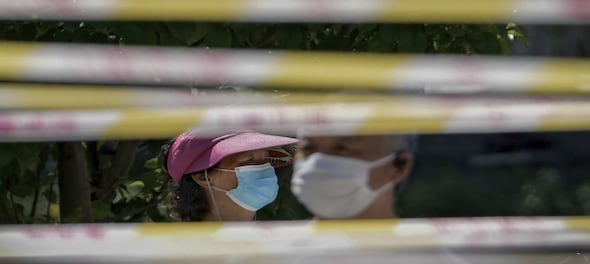
In response to a surge in respiratory illnesses among children in northern China, the Union Health Ministry of India is proactively reviewing preparedness measures. This precautionary step is taken in light of the ongoing influenza and winter season, which typically sees an increase in respiratory illness cases. The Indian Government is closely monitoring the situation and has stated there is no cause for alarm.
The Union Health Secretary has advised States and Union Territories to review public health and hospital preparedness measures. These include the availability of human resources, hospital beds, drugs and vaccines for influenza, medical oxygen, antibiotics, personal protective equipment, testing kits and reagents, functionality of oxygen plants and ventilators, and infection control practices in health facilities.
States and Union Territories have been instructed to implement Operational Guidelines for Revised Surveillance Strategy in the context of COVID-19. This includes integrated surveillance of respiratory pathogens presenting as cases of influenza-like illness (ILI) and severe acute respiratory illness (SARI). They are also asked to monitor the trends of ILI/SARI, particularly in children and adolescents, and upload the data on the IDSP-IHIP portal.
According to a Reuters report, China’s health ministry has urged local authorities to increase the number of fever clinics due to a surge in respiratory illnesses. This is the country’s first full winter since easing COVID-19 restrictions. The World Health Organization (WHO) asked China for more information last week, citing a report on clusters of undiagnosed pneumonia in children by the Program for Monitoring Emerging Diseases.
China and the WHO have faced questions about the transparency of reporting early in the pandemic, which emerged in the central Chinese city of Wuhan in late 2019. The WHO said on Friday no new or unusual pathogens had been found in the recent illnesses.
Chinese National Health Commission spokesperson Mi Feng linked the surge in acute respiratory illnesses to the simultaneous circulation of several kinds of pathogens, most prominently influenza. He urged efforts to increase the number of relevant clinics and treatment areas, extend service hours, and strengthen guarantees of drug supplies.
Mi emphasised the need for epidemic prevention and control in key crowded places such as schools, childcare institutions, and nursing homes, and to reduce the flow of people and visits. Cases among children are particularly high in northern areas like Beijing and Liaoning province, where hospitals are warning of long waits.
The State Council, China’s cabinet, said on Friday that influenza would peak this winter and spring, while mycoplasma pneumoniae infection would remain high in some areas. It also warned of the risk of a rebound in COVID-19 infections.
On Thursday the WHO said data provided by China suggested the recent cases were linked to the lifting of COVID curbs 11 months ago, along with the circulation of known pathogens like mycoplasma pneumoniae, a common bacterial infection that typically affects children, which has circulated since May.
The World Health Organisation (WHO) has reported an increase in respiratory illness in northern China, attributed to usual causes like Influenza, Mycoplasma pneumonia, SARS-CoV-2 etc. The release of COVID-19 restrictions, the onset of the winter season, and the cyclical trend of respiratory illnesses have led to this surge. WHO has sought additional information from Chinese authorities but assesses there is no cause for alarm at present.
(Edited by : Amrita Das)
Check out our in-depth Market Coverage, Business News & get real-time Stock Market Updates on CNBC-TV18. Also, Watch our channels CNBC-TV18, CNBC Awaaz and CNBC Bajar Live on-the-go!


PM Modi's 'Apni Kashi' set for massive 5km, 4-hour-long road show on May 13
May 8, 2024 11:25 AM
In Andhra's Pithapuram, its Pawan Kalyan's charisma vs YSRCP MP Geetha's credentials
May 8, 2024 10:23 AM

